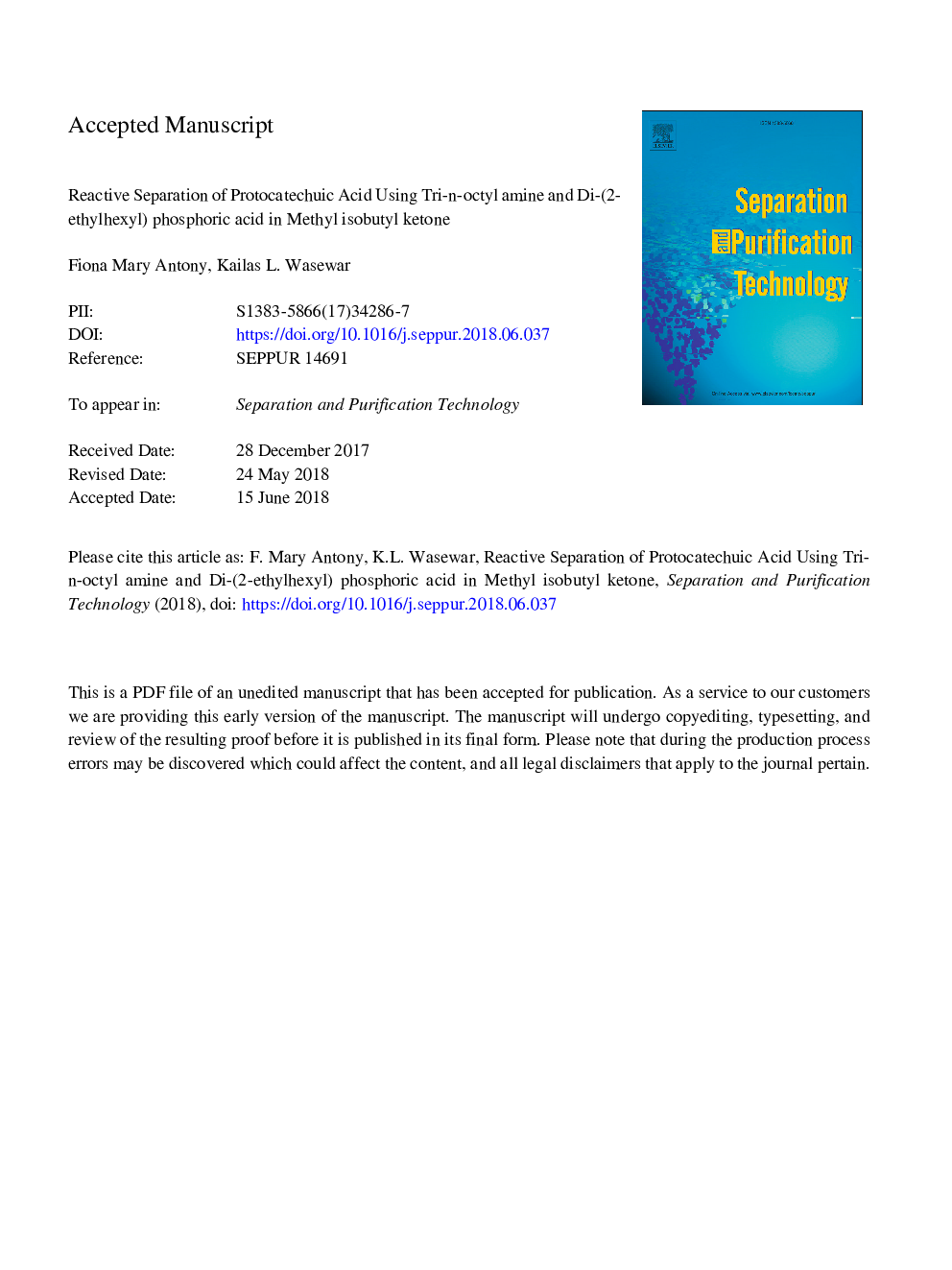| Article ID | Journal | Published Year | Pages | File Type |
|---|---|---|---|---|
| 7043521 | Separation and Purification Technology | 2018 | 30 Pages |
Abstract
Protocatechuic acid is used extensively in pharmacological and related industries which can also be obtained by fermentation. Reactive separation by means of reactive extractant is a favourable alternative to recover carboxylic acids from the aqueous dilute streams and the fermentation broth. In this paper, the reactive separation of protocatechuic acid were performed by D2EHPA (Di-(2-ethylhexyl) phosphoric acid) and TOA (tri-n-octyl amine) dissolved in MIBK (Methyl isobutyl ketone) at 298â¯K. Distribution coefficients, degree of extraction, complexation constants and loading ratio were estimated. The equilibrium for protocatechuic acid-extractant-diluent system was represented using Langmuir model, mass action law and relative basicity model. Results obtained from model were found to be close to experimental data. TOA was found more effective than D2EHPA for the recovery of protocatechuic acid having 5.39 as maximum distribution coefficient and 84.36% efficiency at 0.01â¯molâ¯Lâ1 and 1.1437â¯molâ¯Lâ1 concentration of protocatechuic acid and TOA respectively.
Keywords
Related Topics
Physical Sciences and Engineering
Chemical Engineering
Filtration and Separation
Authors
Fiona Mary Antony, Kailas L. Wasewar,
